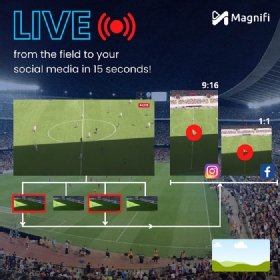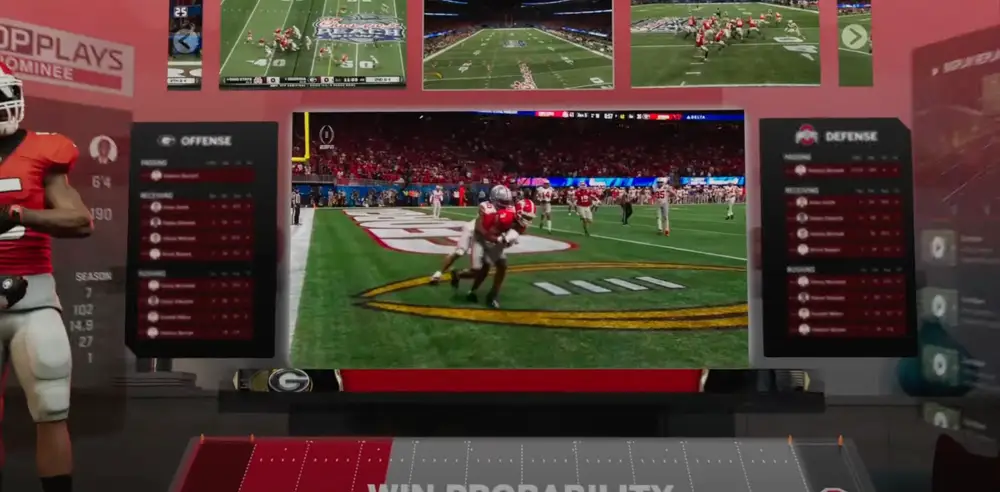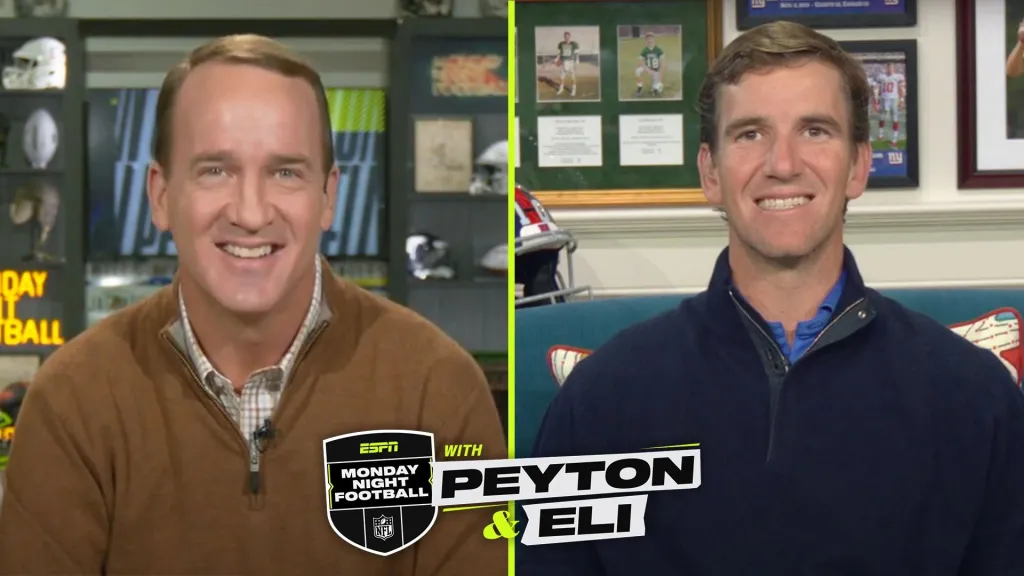Ten Predictions for 2024: Gen AI, Hybrid Cloud To Dominate Mindshare; Olympic Viewership To Rebound
Tech, business developments promise tumultuous yet inspirational year
Story Highlights
It’s the second week of January, and that means CES 2024 is under way, offering a slew of new electronic gadgets that will change the way sports fans consume content. It also spurs thought about how those technologies will be deployed and about the future in general. How will they shape 2024? What other trends and developments might shape the sports-production industry’s future? Herewith are some predictions (okay, guesses) on some of the big trends and developments that could impact the sports-content–creation industry in 2024:
Everyone will dive deeper into generative AI (and traditional AI).
It’s still unclear how generative AI will impact sports production, but one thing is certain: long-term, it will affect everything from player performance and injury analysis to coaching to the in-venue fan experience and, of course, to content creation and delivery. At SVG, we will be tracking a lot of the developments closely (especially deployments) and will also make that central to many of our in-person events because everyone is eager to discuss what AI means to their company and career.
In 2024, look for AI to continue to improve the capabilities of automated camera and audio tools as well as to build on momentum on the digital side of the industry. It is that digital side — in particular, social-media content creation and publishing — where it is going to have the most immediate effect. Personalization of video highlights and content is the best way to truly connect with fans, and the truly personalized experience is possible only with AI and generative AI.
Will it be a big topic at NAB 2024? Probably, but look for the talk to be a bit blue-sky as manufacturers figure out how to incorporate it in their broadcast-hardware and -software offerings. Sooner than later, though, generative AI, especially in the area of coding, will likely help get products to market faster, offer software updates more quickly, and improve quality control. But we are still in the very, very early days of figuring out what AI will mean, who will control it as it relates to a sport (the league? team? rightsholder?), and, of course, looming issues like copyright and even content security that need to be addressed.
HDR will continue to make gains, and workflows will improve.
The entire broadcast and content-creation industry has suffered because the move to HDR has been one of fits and starts. But 2024 may finally see some more-positive steps taken as events that have typically not been done in HDR (or 1080p and 4K) make the leap. CBS Sports, for example, will deliver Super Bowl LVIII game, pre/postgame, and halftime coverage to viewers in 1080p HDR and 4K HDR. There are other HDR firsts to be announced, and, of course, the 2024 Paris Olympics on NBC seem destined to be a weeks-long tent-pole event for fans of HDR. And let’s not underestimate the new set of HDR-capable consumer devices taking another step forward in quality this week at CES (or with Sony’s recent unveiling of micro-LED technology that promises new levels for the nits, brightness, and contrast of consumer viewing).
The hybrid cloud dominates NAB 2024 show floor.
It’s increasingly clear that the cloud is going to be a big part of productions big and small. And it is similarly apparent that hybrid cloud, a mix of privately controlled storage and computer processing working alongside public-cloud service-based processing, is going to be a major theme of NAB 2024. That makes perfect sense: the greatest thing happening in the industry today is that sports broadcasters (and every other content creator) now have multiple ways to go about the job of producing content. Want to be fully on-premises? Do it. Want to be fully off-premises? Go for it. Want to mix things up with a small crew onsite and other production personnel working remotely but tied into that crew? Done.
Apple Vision Pro will be a game-changer.
In a little less than a month, Apple’s Vision Pro VR and AR headset will hit the streets at a price of $3,499. Yes, that price will be a source of consternation and ridicule, but the rumors we have been hearing about the high quality of the experience could finally give VR and AR the kind of positive news the technology has been waiting for. Yes, the price needs to fall by a lot for Vision Pro to become a true market force, but look for sports-content creators and leagues to get on board in order to figure out what the new device means to their fans and their business. VR and AR have never quite met the promise of a truly immersive experience, but the rumored high-quality viewing and listening experience of Apple Vision Pro is desperately needed if AR and VR are to become real market forces.
Sports-rights deals will continue to broaden and be less exclusive.
The days of massive monopolistic rights deals that put a single broadcaster or entity in charge of major global sports leagues are ending. Look for more leagues to create deals with smaller rights packages spreading their events over a mix of broadcast, cable, and digital services. Yes, it may frustrate fans, but, with fans consuming content in an increasingly fractured landscape, it only makes sense that more rightsholders ensure that a sport is delivered to as many fans as possible.
The 2024 Paris Olympics will see a return of big-time TV ratings.
The 2016 Rio Olympics marked the last time an Olympics were held in a time zone friendly to the U.S. The 2018 South Korea Games, 2021 Tokyo Games, and the 2022 Beijing Winter Olympics were in the unfriendliest time zones for Olympics fans in the U.S. The opportunity to watch events on the same day that they take place will be welcomed by Olympics fans everywhere. Expect NBC Sports to really deliver from a production and storytelling point of view for viewers and from a ratings point of view for advertisers.
Sports leagues will take more control of their productions.
NASCAR recently opened the doors of a new production facility in Concorde, NC, that will give the organization much more control over its productions (especially for the international market). The PGA TOUR is expected to open a similar facility in Florida next January. Both projects (and certainly others to follow) reflect a technology landscape that allows fiber connectivity to deliver signals from venues thousands of miles away to a control room in a production center rather than to a production truck in a compound. This is one of the most exciting developments in recent years: the ability for domestic rightsholders to find the production philosophy that best suits their needs (either trucks onsite or working from a remote facility) while the leagues use the same facilities to better meet the demands of international rightsholders. The goal is simple: improve storytelling, improve personalization of feeds for different markets, and ultimately deliver a more valuable product that results in raising the value of sports rights.
FAST sports-related channel deployments blossom.
Free ad-supported television (FAST) streaming channels are increasingly a market force with services like Samsung TV Plus, Google TV, Tubi, Pluto, Roku, and Amazon’s Freevee delivering hundreds of channels. Sports content, however, has yet to fully take off, but that should change in 2024. Look for leagues to use FAST channels to reach dark markets around the globe, deliver archived content and highlights in markets where they have broadcast partners, and prove that the linear-TV viewing model isn’t dead yet.
Alternative broadcasts continue to grow.
It wasn’t too long ago that the consumer press would be writing disparaging stories about alternative-broadcast efforts like the ESPN MegaCast. Why all the channels? Who wants all this content? Isn’t this a waste of time and energy? Jump ahead a few years, and things like the Manningcast (and, yes, the college-football MegaCasts) are flourishing and changing the game. In this world of personalization, alternative broadcasts are only going to become more popular as a way to bring in new audiences and improve stickiness to keep viewers tuned in.
2024 signals dynamic new phase in sports production.
The final prediction? Sports production is entering the most earth-shaking, ground-breaking, tumult-making, yet inspirational phase ever. Smaller events will use technology to improve their production quality and begin to build larger audiences and increase their fan bases in ways consider impossible without a multimillion-dollar budget. Larger events will use technology to become more efficient (and more sustainable), ultimately making their shows bigger and better.
For us here at SVG, it’s going to be a lot of fun helping our community understand what all the developments mean to companies and careers.





